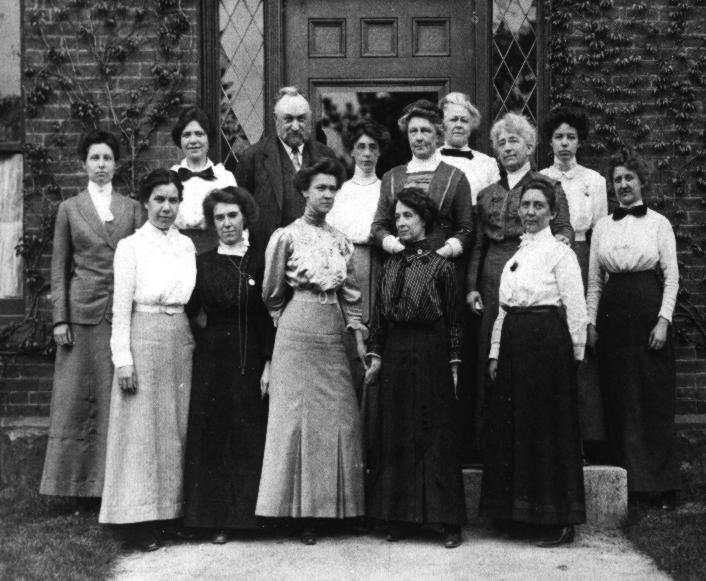It seems to be a law of universal application that if a task is boring and low paid, it should be given to a woman. Many of the women given such tasks in the past performed them with such skill and dedication that their work has become part of the strong foundations of modern science. It seems to me to be a matter of great shame that many people today do not know the names of these women.
It is thanks to a group of women who were paid very low rates that we have a stellar classification scheme based on spectral types. Those women were hired by Edward C. Pickering to perform the menial task of examining and cataloging stellar spectra. These women were know as Pickering's harem, or the Harvard Computers.

Pickering's Harem - image courtesy Wikimedia Commons.
The Draper Catalog of Stellar Spectra was produced in 1890, based mainly on the classification work of Williamina Fleming. In 1897, Pickering and Antonia Maury published a study of the spectra of bright stars in the northern hemisphere. In 1901, Pickering and Annie Jump Cannon published a study of the spectra of bright stars in the southern hemisphere. The classification scheme devised by Annie Jump Cannon became the basis for the Harvard spectral classification scheme which, with additions, is still used.
It was Henrietta Swan Leavitt, one of these 'computers', who discovered the relationship between period and luminosity in Cepheid variables. These Classical Cepheids were used by Edwin Hubble to determine that the Milky Way is not the only 'island universe', or galaxy.
These women, who contributed so much to the advancement of science are surely deserving of more honor than they were ever shown in their own lifetimes.
They all worked in the same small second floor room at the Harvard College Observatory. This room is still intact, though somewhat modernized. It is not marked by a plaque.
Pickering's Harem, The Grasslands Observatory.
Even less honored, because widely unknown, is the contribution to science of Émilie du Châtelet. She is justly famous for her French translation of Newton's Principia Mathematica. However, it is not so widely known that she suggested a relationship between the position of a color in the spectrum and its energy, and predicted the existence of energies beyond the visible spectrum.
Long before the cataloging of stars by spectral type, long before the invention of the spectroscope made such a catalog possible, long before infra-red radiation was named, Émilie du Châtelet had this to say about the stars:
The light of the Sun appears to be yellow. Thus it is necessary that the Sun projects by its nature more yellow rays than others, because Mr. Newton has shown in his Optics, page 216, that sunlight is abundant in this kind of ray.
It is very possible that in other systems, there are Suns which project more rays of red, green, etc. and that the primary colors of Suns that we never see are different from ours, and that, in short, there are in Nature other colors than those that we know of in our world.
Dissertation sur la nature et la propagation du feu, page 128 - 129.
Émilie du Châtelet, 1738.
I have just finished a plain text transcription of the Dissertation sur la nature et la propagation du feu. An English translation is in progress. I shall edit this article to include links as soon as I have posted the dissertation.




Comments